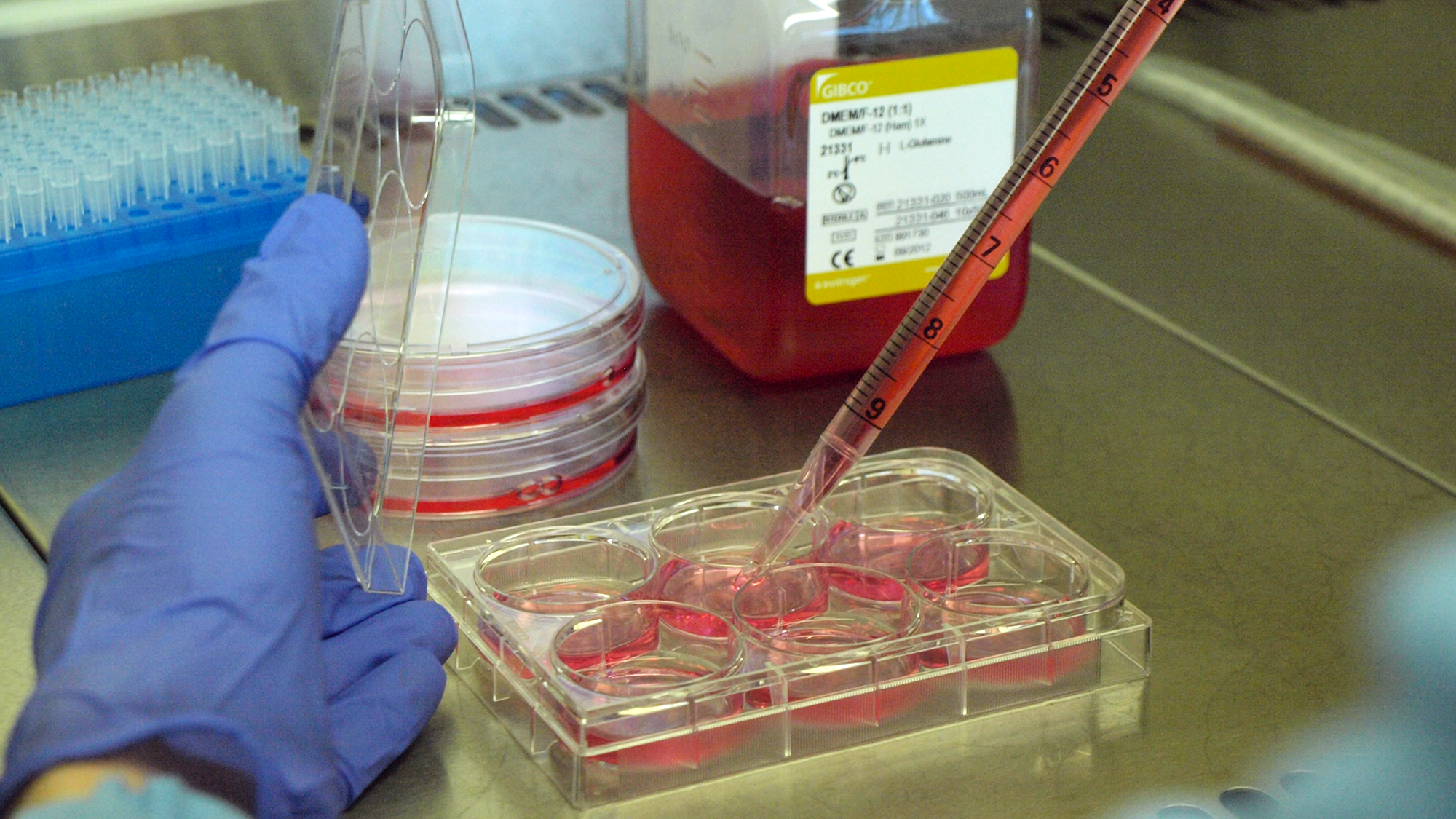Biomedicine is a discipline that seeks to understand how organisms work and to discover how they can be treated when they become ill. For this reason, and because of the practical and ethical impossibility of experimenting with human beings, biomedical experiments require the use of living cells in the laboratory.
All clinical drug trials, for example, begin with an in vitro experiment with cell cultures. These allow us to see how cells react to a new drug, or how certain molecules may be key to cellular processes, among other things.
These cultured cells are obtained from tissue or organ samples and need a culture medium (their food) for their survival. This combination of sugars, vitamins, salts and antibiotics, among others, can also be restrictive in terms of which cells can grow in this culture. In this way, researchers can experiment to see which elements or factors are essential for one function or another. For example, in 1954 Rita Levi-Montalcini received a Nobel Prize after discovering the key growth factor in the growth of neuronal axons in culture.
Cell cultures are used in laboratories around the world to understand the functioning of cells, the basic unit of all living things.
From cell cultures, one can also create cell lines. Unlike standard cell cultures, which after a certain number of divisions stop reproducing (at which point they reach senescence), cell lines reproduce continuously. This property, which can they can develop spontaneously or it can be induced, makes the cells immortal, so they can grow unlimitedly. In addition to genetically modified cells, this characteristic is typical of rodent cells and tumor cells. HeLa, the first human cell line, was developed in 1952 from the cervical tumor cells of Henrietta Lacks, an African-American woman whose incredible story has been told in a book and even a movie.
Cell cultures are not only essential in basic research to understand cell function, to deepen knowledge of the genome and its regulation, or to test drugs. They also have applications such as the production of viruses for vaccines, the production of antibodies, becoming bioreactors to produce drugs and even creating artificial tissues for grafts and transplants.
Pros & cons
As with almost everything, working with cells in culture has advantages and disadvantages:
- Advantages: they require less maintenance than a whole organism, the cell is accessed directly, which also ensures that the drug is administered directly where we want to get to. Their use also reduces the use of animal models.
- Disadvantages: ideal conditions are needed for their growth, and since they are not in a real tissue they lose the properties of the tissue of origin so that. Furthermore, it has limitations in terms of understanding the systemic functioning of organisms. Since there is no 3D organization, no interactions between cells, and no system that controls the homeostasis of the organism, it may not be possible to extrapolate the results to an in vivo assay.
Therefore, in order to avoid these pitfalls and try to study cells in context, more and more work is being done to try to create 3D organoids or tissues from cultured cells, or even bioprinting.







